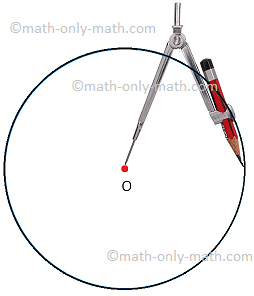Types of Ratios
We will discuss here about the different types of ratios.
1. Compounded ratio: For two or more ratios, if we take antecedent as product of antecedents of the ratios and consequent as product of consequents of the ratios, then the ratio thus formed is called mixed or compound ratio. As, compound ratio of m : n and p : q is mp : nq.
In other words,
When two or more ratios are multiplies termwise; the ratio thus obtained is called compound ratio.
For example:
The compounded ratio of the two ratios a : b and c : d is the ratio ac : bd, and that of a : b, c : d and e : f is the ratio ace : bdf.
For ratios m : n and p : q; the compound ratio is (m × p) : (n × q).
For ratio m : n, p : q and r : s; the compound ratio is (m × p × r) : (n × q × s).
2. Duplicate ratio: Duplicate ratio is the ratio of two equal ratios.
For example:
The duplicate ratio of the ratio x : y is the ratio x\(^{2}\) : y\(^{2}\).
In other words,
The duplicate ratio of the ratio m : n = Compound ratio of m : n and m : n
= (m × m) : (n × n)
= m\(^{2}\) : n\(^{2}\)
Therefore, the duplicate ratio of 4 : 7 = 4\(^{2}\) : 7\(^{2}\) = 16 : 49
3. Triplicate ratio: The triplicate ratio is the compound ratio of three equal ratios.
The triplicate ratio of the ratio a : b is the ratio a\(^{3}\) : b\(^{3}\).
In other words,
The triplicate ratio of the ratio m : n = Compound ratio of m : n, m : n and m : n
= (m × m × m) : (n × n × n)
= m\(^{3}\) : n\(^{3}\)
Therefore, the triplicate ratio of 4 : 7 = 4\(^{3}\) : 7\(^{3}\) = 64 : 343.
4. Subduplicate ratio: The subduplicate ratio m : n is the ratio √m : √n. So, the subduplicate ratio of the ratio m\(^{2}\) : n\(^{2}\) is the ratio m : n.
For example:
The subduplicate ratio of 25 : 81 = √25 : √81 = 5 : 9.
5. Subtriplicate ratio: The subtriplicate ratio m : n is the ratio √m : √n. So, the subduplicate ratio of the ratio \(\sqrt[3]{m}\) : \(\sqrt[3]{n}\) is the ratio m : n.
For example:
The subtriplicate ratio of 125 : 729 = \(\sqrt[3]{125}\) : \(\sqrt[3]{729}\) = 5 : 9
6. Reciprocal ratio: The reciprocal ratio of the ratio m : n (m ≠ 0, n ≠ 0) is the ratio \(\frac{1}{m}\) : \(\frac{1}{n}\).
For any ratio x : y, where x, y ≠ 0, its reciprocal ratio = \(\frac{1}{x}\) : \(\frac{1}{y}\) = y : x
Similarly, we can say if the antecedent and consequent of a ratio be interchanged, the changed ratio is called the inverse ratio of the previous ratio.
For example:
Reciprocal ratio of 7 : 13 = \(\frac{1}{7}\) : \(\frac{1}{13}\) = 13 : 7.
5 : 7 is the inverse ratio of 7 : 5
7. Ratio of equalities: For a ratio, if the antecedent and consequent are equal, the ratio is called ratio of equality.
For example: 5 : 5 is the ratio of equalities.
8. Ratio of inequalities: For a ratio, if the antecedent and consequent are unequal, the ratio is called ratio of inequality.
For example: 5 : 7 is the ratio of inequalities.
9. Ratio of lesser inequalities: For a ratio, if antecedent is less than the consequent, the ratio is called the ratio of lesser inequality.
For example: 7 : 9 is a ratio of lesser inequalities.
10. Ratio of greater inequalities: For a ratio, if antecedent is greater than the consequent, the ratio is called the ratio of greater inequality.
For example: 13 : 10 is a ratio of greater inequalities.
Note: (i) If the ratio x : y, if x = y, we get ratio of equality. If x ≠ y, we get ratio of inequality, x > y gives ratio of greater inequality.
(ii) y : x and x : y are mutually inverse ratio to each other.
Didn't find what you were looking for? Or want to know more information about Math Only Math. Use this Google Search to find what you need.
Recent Articles
-
Dividing 3-Digit by 1-Digit Number | Long Division |Worksheet Answer
Apr 24, 24 03:46 PM
Dividing 3-Digit by 1-Digit Numbers are discussed here step-by-step. How to divide 3-digit numbers by single-digit numbers? Let us follow the examples to learn to divide 3-digit number by one-digit nu… -
Symmetrical Shapes | One, Two, Three, Four & Many-line Symmetry
Apr 24, 24 03:45 PM
Symmetrical shapes are discussed here in this topic. Any object or shape which can be cut in two equal halves in such a way that both the parts are exactly the same is called symmetrical. The line whi… -
Mental Math on Geometrical Shapes | Geometry Worksheets| Answer
Apr 24, 24 03:35 PM
In mental math on geometrical shapes we will solve different type of problems on simple closed curves, polygons, basic geometrical concepts, perpendicular lines, parallel lines, circle, terms relates… -
Circle Math | Terms Related to the Circle | Symbol of Circle O | Math
Apr 24, 24 02:57 PM
In circle math the terms related to the circle are discussed here. A circle is such a closed curve whose every point is equidistant from a fixed point called its centre. The symbol of circle is O. We… -
Fundamental Geometrical Concepts | Point | Line | Properties of Lines
Apr 24, 24 12:38 PM
The fundamental geometrical concepts depend on three basic concepts — point, line and plane. The terms cannot be precisely defined. However, the meanings of these terms are explained through examples.




